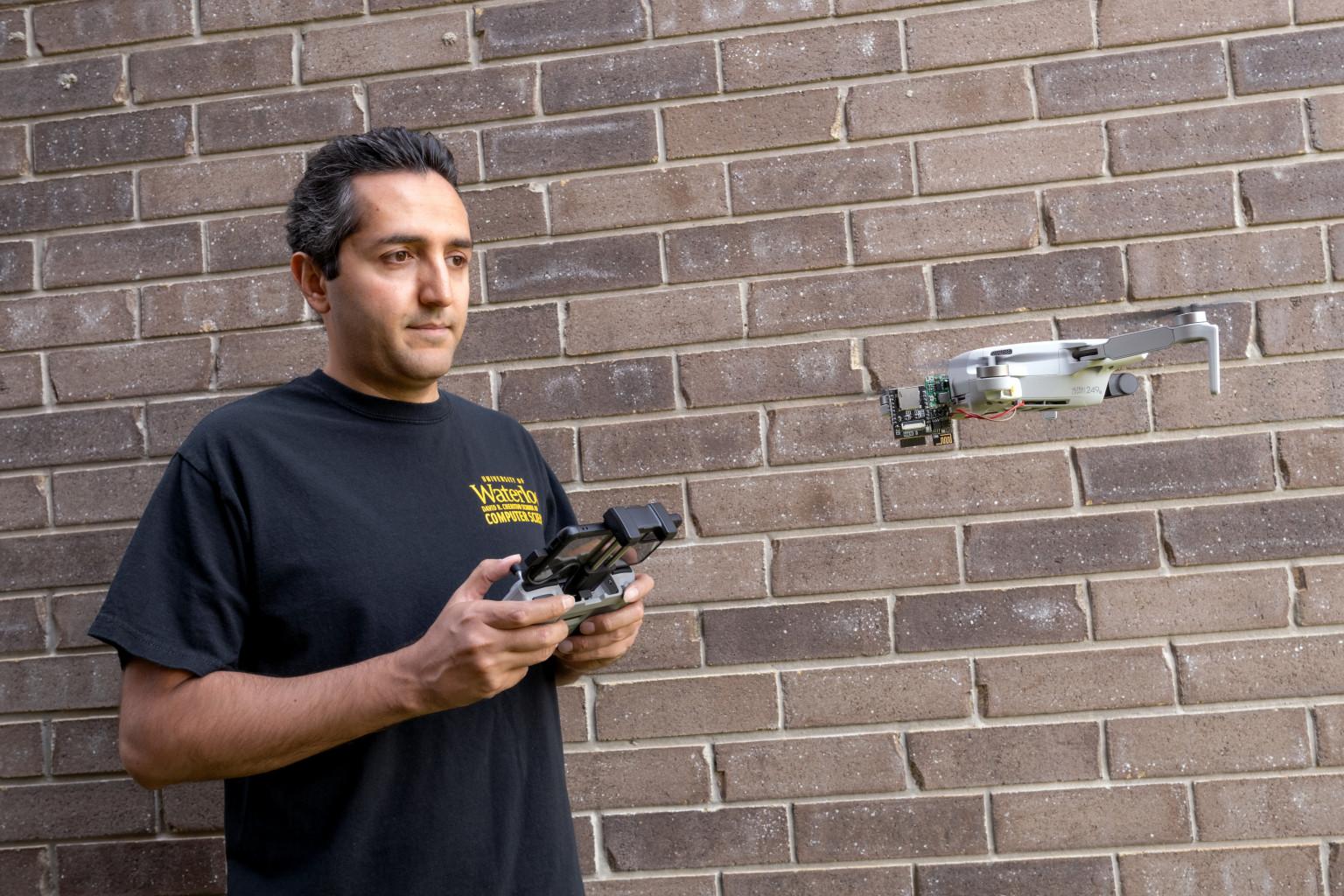Using a drone with a Wi-Fi module called Wi-Peep, researchers have developed a flying scanning device for smart devices.
A research team from the University of Waterloo in Ontario, Canada, has developed a system based on drones. This is able to locate electronic devices such as cell phones and laptops even through walls. The module called Wi-Peep takes advantage of the fact that a WiFi-enabled device responds to a “ping” from another WiFi-enabled device.
This is even if the devices are not in the same network. Recently, researchers Ali Abedi and Deepak Vaishet Your search results At the 28th Annual International Conference on Computing and Mobile Networks Gifts.
The Canadian team discovered this vulnerability, known as the “Polite WiFi Loophole”, in 2020 by conducting experiments on wireless networks. Previously, it was believed that due to Wi-Fi security protocols, only devices within the same network could communicate with each other, sending and receiving small packets of data.
The premise was that if a device received a packet from outside the network, it would discard it. But when Abedi and his team sent random packets of data to 5,000 WiFi-enabled devices, it surprised them all, including those password-protected, by automatically replying with an acknowledgment. This is made possible by exploiting the 802.11 LAN protocol.
Wi-Peep exploits a vulnerability in the Local Access Network Protocol
Accordingly, and thus everything smart phones Willing to automatically respond to attempts to connect to other devices in their vicinity, even if the network is password-protected. The idea behind the current experiment is to exploit this vulnerability. Using an off-the-shelf drone containing a $20 Wi-Peep and weighing less than 10g, researchers first developed an airborne scanning device.
The researchers then circled the Wi-Peep outside a building as it navigated through smart devices. It sends multiple messages to each accessible device. As a result, the vulnerability in the network standard made it possible to track these components even through walls. The technology locates the device within approximately a meter range by evaluating automatic contact responses from WiFi devices (even on password protected networks).
Measures response times to triangulate device position. This allowed the researchers to identify all the connected devices in the room. You can even track people’s movements when they have a phone or smartwatch with them.
Scammers can also use the script
Scientists have warned against such a scenario due to the lack of data protection. After all, it is conceivable that this experiment given by scientists could also be used by fraudsters for their purposes. For example, a potential thief using a Wi-Peep drone might find vulnerable areas in an apartment or office. All he has to do is scan the rooms for security cameras. Dr. Ali Abedi, Professor of Computer Science at the University of Waterloo, explains:
“Wi-Peep devices are like lights in the visible spectrum and walls are like glass. Using similar technology, one can track the movements of security guards in a bank by tracking the location of their phones or smart watches. Similarly, a thief can determine the location and type of smart devices in the home, including Security cameras, laptops and smart TVs, to find a good filter for intrusion.In addition, operating the device from a drone means that it can be used quickly and remotely without much chance of user monitoring.
Basically, what we need to do is close the Polite WiFi vulnerability to prevent our devices from responding to strangers. We hope our work will influence the design of next-generation protocols.”
Meanwhile, Abedi urges WiFi chip makers to introduce random and random variations in hardware response times. This would make calculations like Wi-Peep completely inaccurate.
camouflage.info

“Certified tv guru. Reader. Professional writer. Avid introvert. Extreme pop culture buff.”







More Stories
Holodeck: Star Trek technology becomes reality
New technology revolutionizes hurricane forecasting :: wetter.at
SBB replaces railway radio technology between Thun and Bern